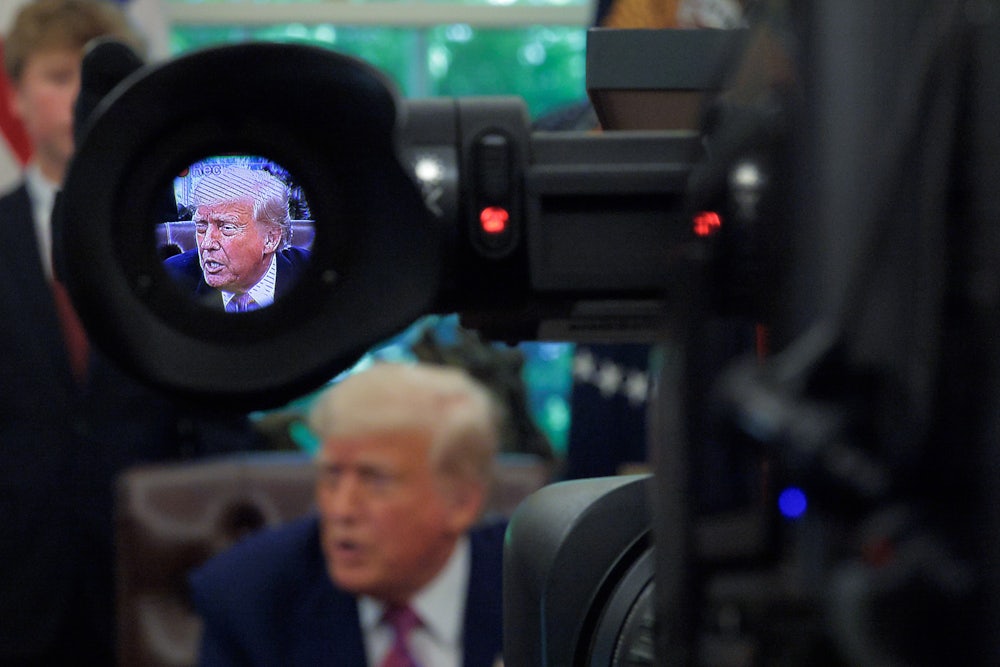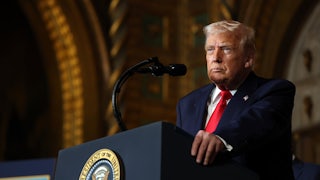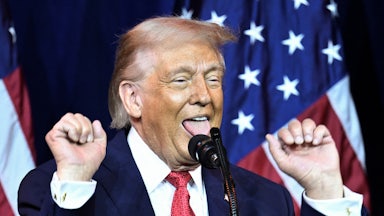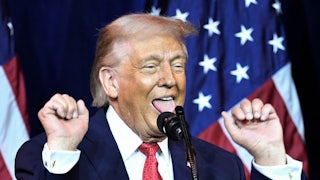In 1997, President Bill Clinton tabbed me to co-chair a Presidential Advisory Committee on the Public Interest Obligations of Digital Television Broadcasters, to report to Vice President Al Gore. Ever since the Telecommunications Act of 1934, broadcasters (then radio, later television), given the gift of free airwaves from the public, had pledged in return to act in the public interest. Airwaves worth billions, for free. But in the late 1990s, technology had changed the nature of television—the digital era meant we were moving from stations and networks with one venue to having dozens, the advent of hundreds of channels, and a need to take a new look, in a new era, at how the transition to digital television would uphold or potentially erode the public benefits of free, local, over-the-air broadcasting.
With a commission having a combination of public interest advocates, experts, and broadcasters, we went through an extensive process of hearings and research. We focused on the nature of new and emerging technologies, closed captioning and the broader needs of the disability community, the political sphere, educational needs, children’s programming, minority ownership of stations, and more. We deputized the brilliant lawyer and public intellectual Cass Sunstein to draft a new set of public interest obligations to fit the new era.
Broadcasters, on our committee and beyond, starting with the National Association of Broadcasters (which attacked me even before we were actually in business), crowed about their vast commitment to the public interest, which mostly consisted of a huge inflation of the value of their public service announcements, which largely ran in the wee hours of the morning, and their charitable activities that were often about marketing themselves.
Our mandate was to try to achieve consensus, if not unanimity, to get broadcasters and the public interest community to find common ground, including on issues like campaign finance reform. It looked very promising at the start. But in the end, consensus meant watering down our proposals. The broadcasters insisted that a new code of conduct was not necessary; they would act voluntarily. They pledged to abide by the gist of our recommendations. An empty pledge, as it turned out.
When it came to the broadcasting of politics and elections, we decided to ask for a very small commitment, but one beyond what nearly all local broadcasters had done. That was to commit to airing five minutes of political matter a night for the 30 nights before a national election. We did not ask for anything specific—they could do mini-debates; give candidates for different offices, including local ones with no opportunities to do paid advertising, a minute to get a free message across; do segments on the views and positions of candidates; or do something even more creative. We did not ask them to do a single five-minute segment; they could spread it across news shows and in other places, but to do it in the broad swath of prime time, from 5 p.m. to 11 p.m. Five minutes for 30 days.
This idea was embraced by veteran journalist Paul Taylor, who left The Washington Post to create the group Free TV for Straight Talk, and broadcast news legend Walter Cronkite. Together, we pushed to get broadcasters to fulfill their solemn pledge to act voluntarily in the public interest. Despite the promises, only a handful of broadcast entities actually fulfilled the pledge, or even came close. Most, including network affiliates and the larger station groups, did nothing or next to nothing. The same was true when it came to educational programming, children’s television, and the other areas that would fit under the rubric of acting in the public interest. The result was fundamentally to take the billions in free airwaves from the public and give little or nothing in return.
So I am not surprised now to see that broadcasters—in an era when there has been much more concentration of ownership, when the technology has made the business models more fraught—have shown no commitment to anything resembling the public interest or to the fundamentals of a free society. We are no longer in a world where broadcast pioneers like Capital Cities/ABC’s Tom Murphy and local community owners who believed in acting in the public interest have any role. Courage in the face of governmental criticism and governmental power is barely present. Consolidation into behemoths with interests beyond the airwaves and the digital platform now rule. Whether it is Disney or Paramount, Universal or Nexstar, it is all about the bottom line, and the fear of retribution by a thuggish regime means that every value beyond the money goes out the window.
This started early on in the Trump presidency, when Disney-ABC forked over $16 million after Trump said he would sue over a George Stephanopoulos comment that he had been convicted by a jury in a civil case of rape—something the judge in the case said was true even if it did not meet the narrow, technical nature of the term in New York law. The Trump suit would have been thrown out of court—but ABC in effect paid protection money. Paramount soon followed with another capitulation over a laughable case attacking the edit of a Kamala Harris interview on CBS News’s 60 Minutes, ahead of the effort to get approval for the sale of its parent company, Paramount, to David Ellison.
Then came the Jimmy Kimmel episode, with the pending takeover by local-station behemoth Nexstar of local-station behemoth Tegna to create a super-behemoth dominance of local television, with approval needed by the Federal Communications Commission. A commission whose chair, Brendan Carr, wrote the chapter on telecommunications for radical right-wing Project 2025, and has been a leading capo in the crime family administration, using his position to threaten these companies with mayhem unless they capitulate and pay protection money, or kowtow to demands to launder coverage. No other FCC chair ever has misused the power of the office in this way. And he is likely to push to remove or deeply dilute the limit on station ownership, now at 39 percent, along with the ban on owning more than two stations in any marketplace.
The media world was vastly different when our Advisory Committee was created. High-definition television was just beginning; a 24-inch HDTV cost up to $10,000. When we asked consulting firms that focused on media trends whether and when the new technology would break through to the mass public, they predicted that it would take decades to reach reasonable prices, say $2,000 for an HDTV set. Of course, they were way wrong—you can now buy a 70-inch smart TV with ultrahigh definition for a few hundred dollars, a 24-inch one for 70 bucks at Best Buy. And of course there was no idea back then that we would have smartphones or social media.
But there is another way the media world is different. Five companies—five—now control 90 percent of the marketplace. Disney, Comcast, Warner Brothers Discovery, Paramount, and Fox are the media Godzillas, and if Ellison and Paramount get their way and purchase WBD, it will be four. Add to that the fact that right-wing billionaires dominate social media, from X to Meta and now TikTok, and other billionaires with wide business interests that are affected directly by federal government action own The Washington Post and Los Angeles Times, among others of our key newspapers, and we are in an extraordinarily dangerous place. And add further the evisceration via government cuts of public media like NPR and PBS, hitting rural areas especially hard.
As the internet became ever-present and universal, as digital and other technology moved rapidly in the communications sphere, the place and vibrancy—and bottom line—of the most venerable sources of news and information eroded and then collapsed. The New York Times leadership was smart enough to diversify, finding other business avenues, from puzzles to consumer information, to supplement the revenues from the newspaper, and finding other ways to promote the content of the paper. When Jeff Bezos bought The Washington Post, it was applauded by fans of democracy and the public interest; the old business model for it and most legacy media, especially print media, had disappeared, and sustaining flagship entities like the Post, and later the L.A. Times, required benign philanthropists for whom annual losses in the tens or hundreds of millions were trivial prices to pay for the good they were preserving and enhancing. That Bezos would move from philanthropy to concern about the Post’s bottom line seemed implausible; that he would erase the “Democracy Dies in Darkness” motto to protect his interests in Blue Horizon and Amazon from damage done by Trump’s henchmen has been jarring.
Of course, some of this dynamic has been deliberately manipulated by those malign actors like Elon Musk, using small—by their standard—portions of their vast wealth to buy, transform, and shape key new communications avenues and tools. And it now describes Trump’s illegal actions involving TikTok, violating the law and engineering a takeover by Peter Thiel and other allies of his authoritarianism. Some of these entities have a history of turning a blind eye to manipulation of elections from Russia, China, and other foreign actors. We can expect more of that. The combination of malign actors manipulating platforms like X and Facebook and taking over TikTok, alongside billionaires and huge corporate conglomerates who will do anything to avoid authoritarian retribution, has left us with a desolate media landscape.
There are still bright spots. MSNBC, or whatever it will now be called after its spinoff from Comcast Universal, has excellent anchors and shows from the likes of Chris Hayes, Lawrence O’Donnell, and Ali Velshi, strong reporters like Jacob Soboroff, and now the best investigative reporter around, Carol Leonnig, another casualty of The Washington Post. The New York Times, the only major national newspaper with ownership still led by those who care about the public interest, remains a strong force for responsible journalism, despite some warts. There are regional papers, including The Boston Globe and The Minnesota Star Tribune, doing good work. Surprisingly, Rupert Murdoch’s Wall Street Journal has shown some admirable backbone in the face of Trumpian pressure. ProPublica has been a jewel of investigative journalism, and outlets like The Atlantic, The New Yorker, The New Republic, and The Contrarian fit the model of a free press speaking truth to power.
But we are dangerously close to having the vast majority of audiences out there getting information solely or largely from sources either directly manipulating the content, or making sure to downplay or ignore anything Trump does not like or want. If we continue to devolve in this way, we will look more like the countries of Russia, Hungary, and China than our own constitutional democracy. Any hope of having the pillar of a free press to provide a meaningful guardrail against incipient authoritarianism will disappear before our very eyes. As my commission experience showed, the Golden Age of broadcasting ended before the new century began. Enter the Dark Ages of media.






